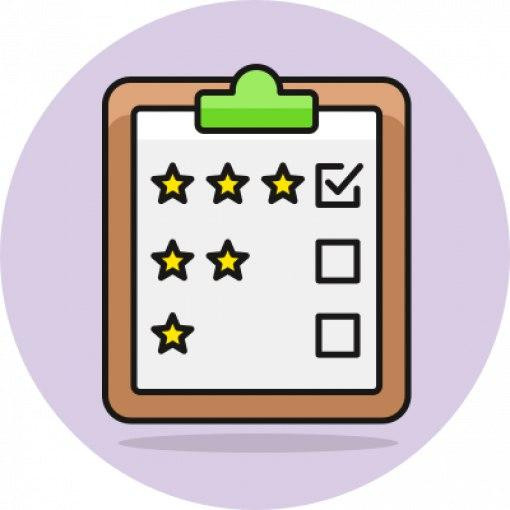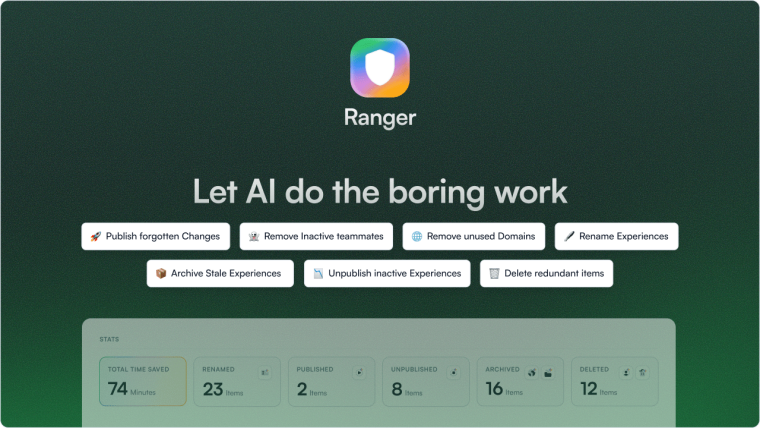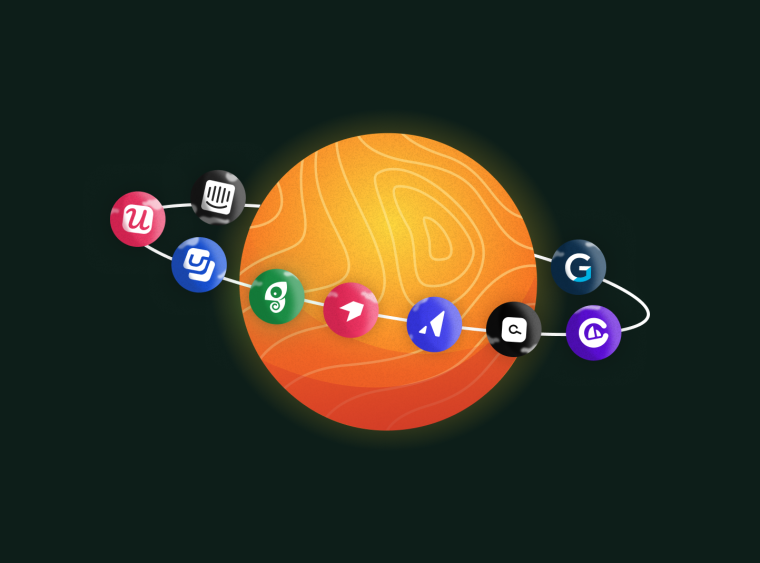Typically, there are two main categories of question types:
Quantitative: Used for quantitative research and measured by the quantity of results (e.g. number of users, percentage of users, specific score, etc.)
Qualitative: Used for qualitative research and measured by the quality of respondents’ answers (e.g. their opinion, preferences, perception, value, etc.)
Which one of these you choose will depend on what kind of data you are hoping to collect.
You can also use them both in the same survey. For example, you can use an NPS or a CSAT survey to capture the number of overall satisfied users and then follow up with an open-ended question, depending on the answers, to learn more about your customer needs, preferences, and expectations.
You need to be careful with how you formulate the question in order to get the most valuable feedback, as we could also categorize questions as “good” and “bad”.
The way Riley Maguire from MonkeyLearn sees it, you need to be aware of bad surveying practices to be able to avoid making mistakes.
“To efficiently manage the response quality, you shouldn’t be asking any leading questions, or ones with polarity, or ones that ask for more info than they need, or asking too many questions that could fatigue the user. Quite often with both NPS and CSAT, we will see teams try to add more questions or bend the base format a bit too far. There may be good reasons for this (it's necessary for the feedback they need), and bad (many often want to ask more questions now to make their analysis easier later), but the trade-off between quality vs. efficiency is a real thing with CSAT. And it's more scalable when it's done simply."
– Riley Maguire, Product Marketing Manager at MonkeyLearn
Now, let’s take a look at the question types you can use, and the most suitable scenarios for each of them (examples included).
Types of survey questions you can ask
Depending on the type of feedback you want to collect and the results you want to gain, you can use open-ended or close-ended questions, multiple-choice or binary-scale, emoji-based questions, star-rating questions, demographic questions, preference questions, emotional state questions, and more.
Note: To showcase the question types more effectively, we’ll use an example company Acme.io to walk you through different question examples and use cases for each. For the sake of the example, let’s say that Acme.io is a collaboration tool for remote teams.
Here are the main CSAT survey question types you should consider.
Multiple-choice questions
These are mainly closed-ended types used for quantitative research. To avoid getting irrelevant answers, the most important thing here is to know what, how, and when to ask.
Binary scale questions
With binary scale questions, your customers will choose one answer or the other. Typically, it’s going to be yes or no, true or false, correct or incorrect, etc.
Due to its closed formulation, this type of question is also called “forced-choice question”. So, in order to get an accurate overview of customer feedback, it’s extremely important not to ask misleading or “bad” questions.
Many of these aren’t going to be in the form of questions, but rather in the form of a statement or a set of statements which respondents should then agree or disagree with.
When to use binary questions
As part of your UX research or product discovery, you can use these questions to better understand users’ viewpoints on a given subject matter, learn more about their typical usage of products similar to yours, identify their pain points, or discover more about their buying habits.
In a way, this is the type most suitable for quantitative research, as it can reveal, for example, how many existing users are likely to use a new feature, how many of them find your product to be easy-to-use, and similar information.
Binary scale question examples
For our imaginary company Acme.io, here’s an example of a binary question that they would show to daily active users after three months of their usage. Built as a Microsurvey in Chameleon, it could look like this:
Some other efficient binary question examples, including both questions and statements, are:
When evaluating a new product, you prefer exploring on your own rather than reaching out to customer service for answers. Correct/Incorrect
Are you using [your product name] every day? Yes/No
Have you tried [new feature name] yet? Yes/No
When you search for new SaaS solutions, you trust only customer reviews you can find on respectable rating platforms. True/False
Keep in mind that this type of question will reveal the unipolar state of customers' opinions and views. It will only tell you whether they like/want/use something or they don't, without a deeper understanding of sentiment nuances.
You can construct your survey to expand each of these with the follow-up questions to learn more, ask for an explanation, or anything else that suits your reason behind the survey.
Pro tip: Don't overwhelm users with too many questions. Also, be mindful about how many surveys are visible to the same user at the same time. Hint: There should be no more than one at a time.
Rating scale questions
This is one of the most common types of survey questions, often used for measuring CSAT, NPS, and CES scores. Typically, these questions include a numerical rating scale ranging from 0 to 10, 0 to 100, 1 to 5, etc.
Unlike binary questions, a rating scale can give you a broader understanding of user sentiment nuances, preferences, and feelings towards your product.
When to use rating scale questions
Use these questions when you want to measure the level of customer satisfaction (or dissatisfaction) and identify different user segments among your customers.
This can be to evaluate whether users love your product, how easy or difficult a new feature is to implement, how satisfied customers are with the customer support, which percentage of your customer base are product fans, and other relevant information.
Rating scale question examples
Back to our example company Acme.io. Here’s a rating scale question their team could show to the users who have just completed the process of signing up for a trial. Built as a CES Microsurvey in Chameleon, it could look like this:
Some other rating scale questions you can use are:
How would you rate our product on a scale from 1 to 5?
On a 0-10 scale, how likely are you to recommend our product to your peers?
How would you rate the quality of response you got from our customer support?
Besides the numerical scale, you can also use textual, descriptive answers, or star-based and emoji-based answer options. A range can go from “very easy” to “very difficult”, or from a “disappointed emoji face” to an “excited emoji face”.

Run product surveys with Chameleon
In-app Microsurveys allow you to capture important user feedback when it's most relevant
Likert scale questions
Likert scale questions are somewhat similar to the rating scale questions, with one significant difference – the Likert scale will help you more accurately make a distinction between positive, negative, and neutral feedback.
Once again, the answer options can be numerical, emoji-based, or descriptive, typically on a scale of one to five. The multiple-choice answers should offer a range between “strongly disagree” (1), “disagree” (2), “neither agree nor disagree” (3), “agree” (4), and “strongly agree” (5).
When to use Likert scale questions
Use this type of scale when you want to find out how customers feel about your product, service, support, onboarding flow, subscription process, or specific features. Also, when you want to discover the level of satisfaction on a deeper ground.
Note: If the majority of responses you get are neutral, consider using a different survey or question type, as you won’t be able to gain meaningful feedback from neutral responses.
Likert scale question examples
Let’s take a look at our made-up company Acme.io once again. For a Likert scale question, they might want to ask their first-time users how satisfied they are with the onboarding flow. For this purpose, they could use a CSAT survey option in Chameleon to create a survey looking like this:
Here are some of the examples you can use:
Would you be disappointed if you could no longer use [product name]?
Did the checkout process make you feel anxious or frustrated at any point?
How satisfied are you with the implementation of [new feature name]?
If you want to expand your insights and learn more about what has made your customers feel excited about the most or what has frustrated them, you can ask open-ended follow-up questions.
Nominal questions
By asking nominal questions you can discover who your users are, what interests them the most, what will they use your product for, would they use it by themselves or with a huge team, etc.
Nominal questions can help you learn more about new users, their demographics, firmographics, and other relevant information. On the other hand, getting the answers to this type of question will help you qualify leads as they come in, and help your sales team determine their next steps accordingly.
When to use nominal questions
The best use case for nominal questions is during the first-time user onboarding. This is especially true if you serve different audience groups, and you want to make an appealing, streamlined onboarding flow for each of your ideal customer profiles (ICPs).
For example, if you offer a free plan for freelancers and solopreneurs, a basic plan for small to midsize companies, and an enterprise plan for corporations, each of those will require a different onboarding journey, different in-app messaging, different level of self-serve support, and more.
Nominal question examples
Let’s say a new user has just signed up for our example company Acme.io, so they want to learn more about them for the sake of offering personalized onboarding guidance. If they were building it in Chameleon, they could use a multiple-button Microsurvey to segment new users straight away. An example could look like this:
You can also use nominal questions to ask:
What is your current role?
What is your company size?
Which teams will be using [product name] at your company?
Are you interested in using our mobile app?
You can offer multiple-choice options, but you can also use open-ended questions if it fits better with your survey goal.
Open-ended questions
Open-ended questions are questions that ask for a longer, written response.
Even though multiple-choice questions offer several options to choose from, and these are generally much easier and more convenient for users to reply to, sometimes a simple yes or no wouldn't suffice.
You should ask open-ended questions to understand what users think, why they think that, what they would do differently, what are their ideas for improvement, how they feel about the latest redesign, and more.
When to use open-ended questions
Use this type of question whenever you need a deeper understanding of customer decisions or further explanation of their multiple-choice answer.
Open-ended questions are great for identifying the cause of the satisfaction or dissatisfaction, discovering the reason behind product cancellation, or capturing customers' ideas for improvement.
Open-ended question examples
Once again, let’s think of a scenario for our example company Acme.io. Let’s say they just rolled out a significant new feature to their premium users. It’s an advanced feature with a complex implementation process. So, they reached out to customers to ask about their experience. An event-triggered Microsurvey built in Chameleon for this purpose could look like this:
Other efficient open-ended question examples are:
Which features do you use most frequently, and why?
What can we improve to help you implement advanced features?
How easy was this step? How long did it take you to complete it?
What do you want to see in our next product update?






